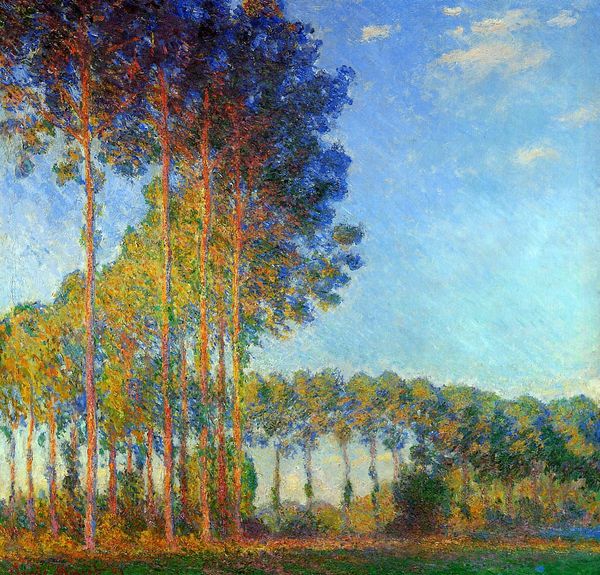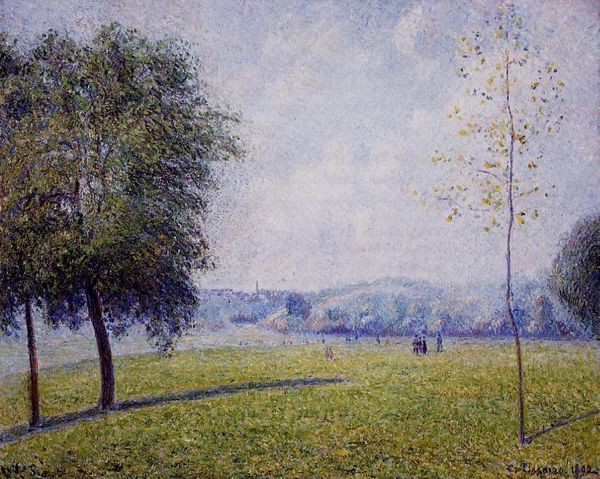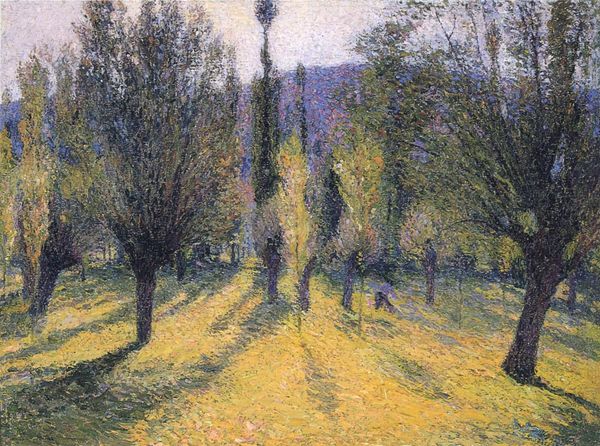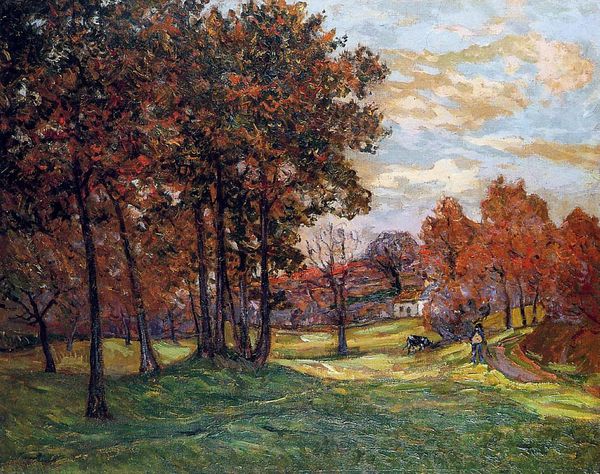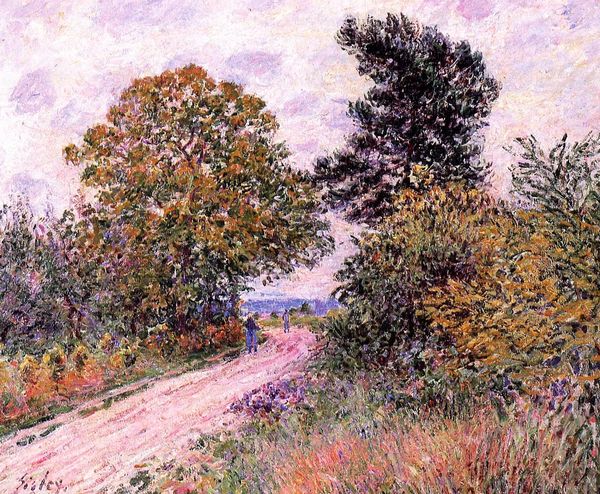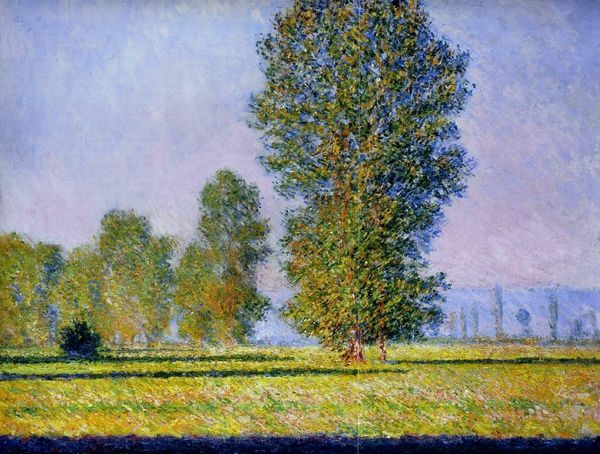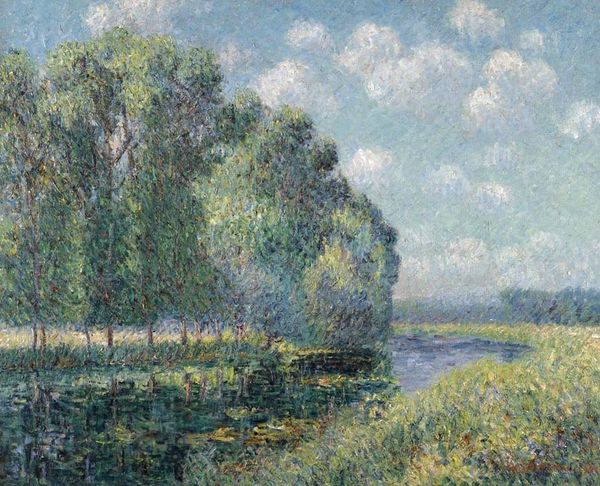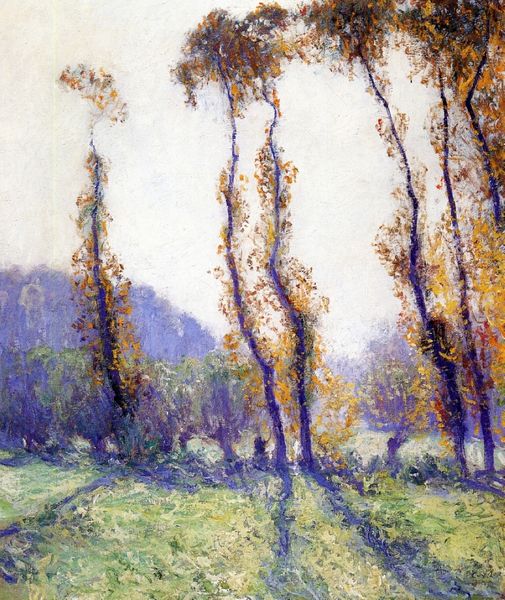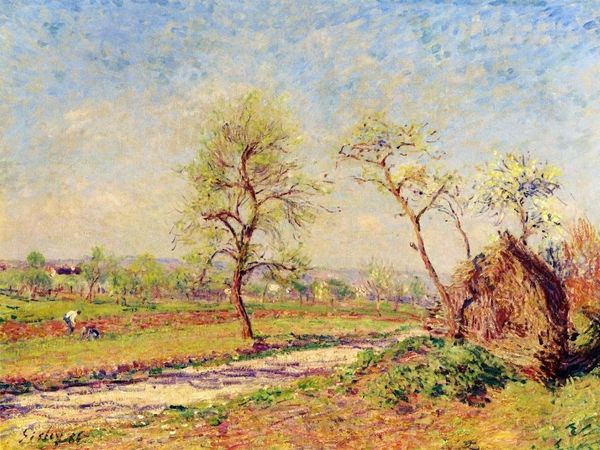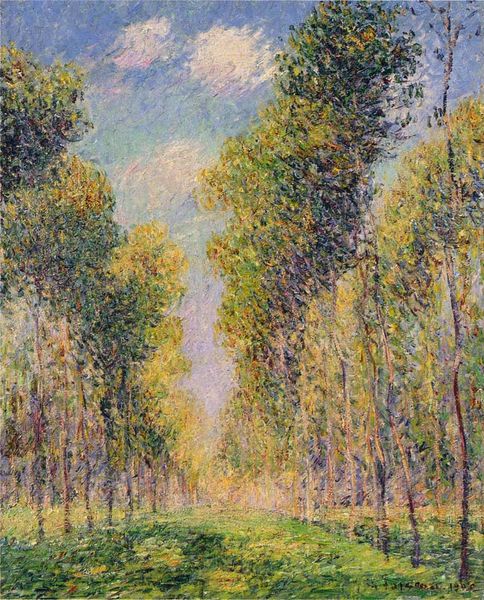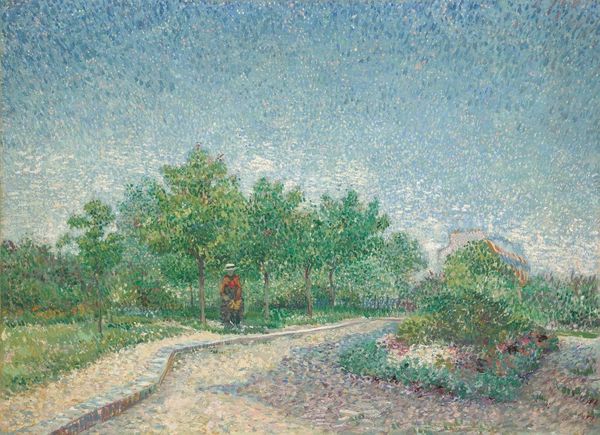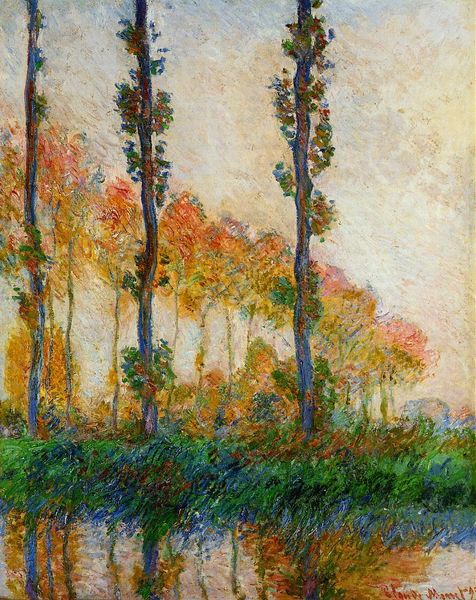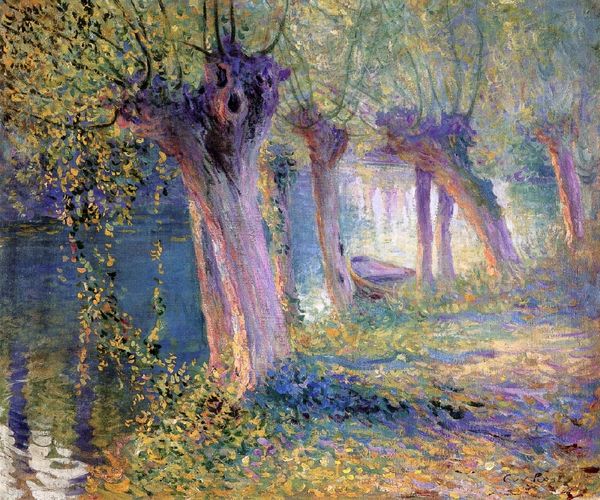
Copyright: Public domain
Editor: We're looking at Camille Pissarro's "Sunset at Sent Charlez. Eragny", painted in 1891, an oil on canvas landscape. I'm struck by the luminosity of the scene and the texture of the brushstrokes. What elements stand out to you? Curator: The orchestration of color, particularly the transition from vibrant greens in the foreground to the soft, muted yellows and lavenders in the sky, dictates the spatial arrangement and visual interest. Note how the pointillist technique isn't about strict dots, but rather a varied application of pigment that invites the eye to mix colors optically. How do you interpret the structural relationships of foreground, middle ground, and background in the painting? Editor: It seems that the progression from the sharply defined foreground, with its distinct vegetation, towards the blurred background creates a sense of depth, but also a slight flattening of the pictorial space. Is that intentional? Curator: Precisely. Pissarro negotiates the tension between representing three-dimensional space and emphasizing the two-dimensional picture plane. Notice the carefully considered placement of vertical tree forms that act as a structural counterpoint to the receding planes, further articulating the composition. It emphasizes formal qualities over the illusion of depth that characterized earlier landscape painting. Editor: That makes sense. It's less about mimicking reality and more about the interplay of colours and shapes. It feels almost abstract at some points. Curator: Indeed. Though rooted in observation, Pissarro’s rendering privileges the internal logic of the painting—its chromatic harmony, textural richness, and structural coherence—over a literal transcription of the scene. The setting sun is suggested by diffused colour rather than delineated with detail. What did you make of that? Editor: It highlights the painting as an object in itself rather than just a window onto a scene. I definitely see the thought process behind each brushstroke. Curator: The painting operates according to its own set of rules, which Pissarro masterfully crafts through the language of form and color. Hopefully, considering this interplay increases understanding of Pissarro’s intentions with colour and form. Editor: Yes, definitely. I'll never see an impressionist landscape in quite the same way again!
Comments
No comments
Be the first to comment and join the conversation on the ultimate creative platform.
